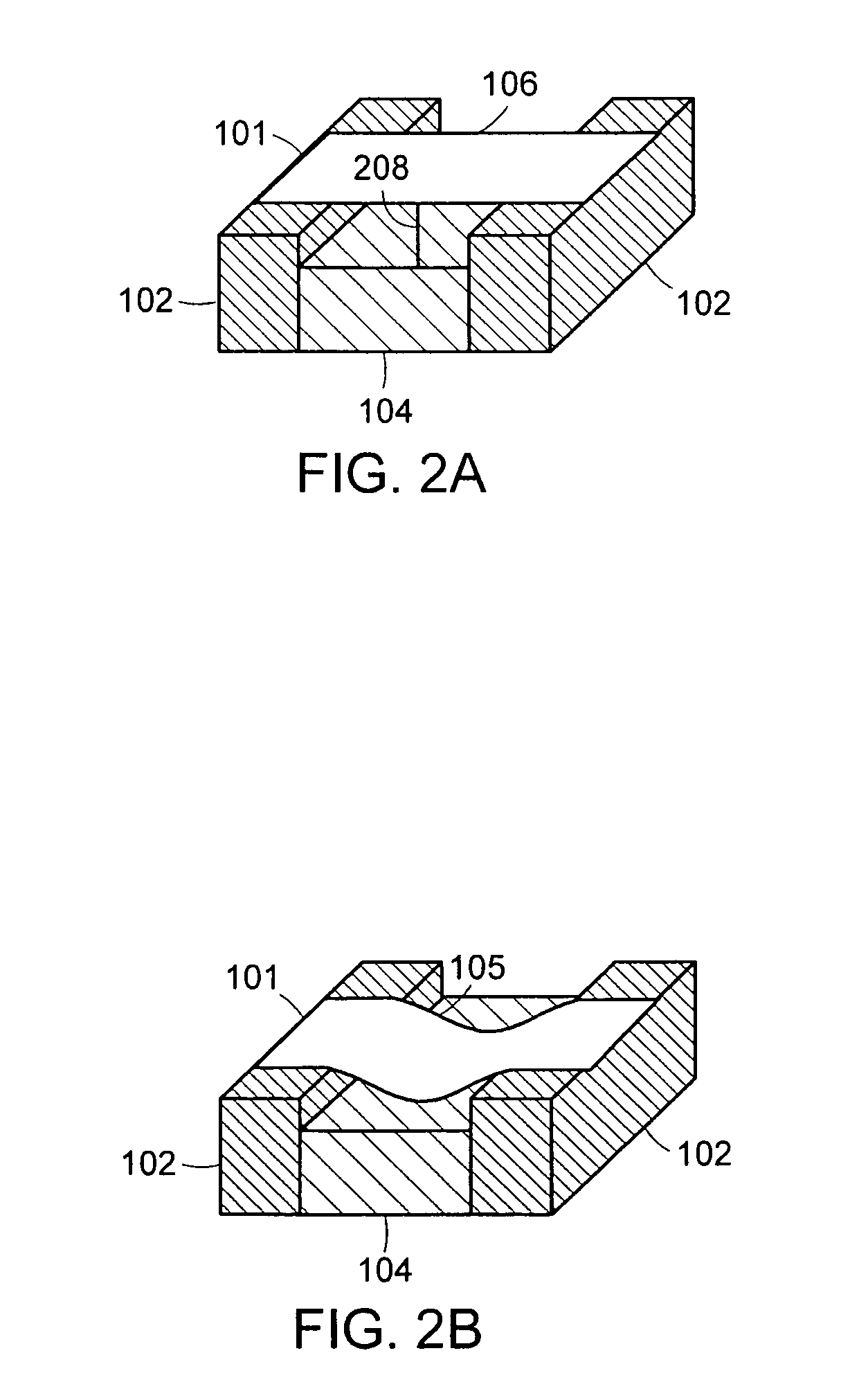Device selection circuitry constructed with nanotube technology
a technology of nanotubes and devices, applied in nanoelectromechanical switches, nanoinformatics, instruments, etc., can solve the problems of long write cycles (ms), low relative speed of dram or sram, and relatively low cost of rom,
- Summary
- Abstract
- Description
- Claims
- Application Information
AI Technical Summary
Benefits of technology
Problems solved by technology
Method used
Image
Examples
Embodiment Construction
[0027] Preferred embodiments of the invention provide new electromechanical memory arrays and methods for making same. In particular, electromechanical memory cells are created that operate anaologously to the NTWCM devices disclosed in WO 01 / 03208, which is hereby incorporated by reference in its entirety. However, unlike the NTWCM devices disclosed in WO01 / 03208, preferred embodiments of the invention replace the suspended nanoscopic wires used in the NTWCM devices with new ribbons made from a matted layer of nanotubes or a non-woven fabric of nanotubes. These new devices are referred to herein as nanotube ribbon crossbar memories (NTRCMs). The new nanotube belt structures are believed to be easier to build at the desired levels of integration and scale (in number of devices made) and the geometries are more easily controlled.
[0028] Because the new nanotube belt crossbar memory devices operate analogously to NTWCM, the description of their architecture and principles of operation...
PUM
 Login to View More
Login to View More Abstract
Description
Claims
Application Information
 Login to View More
Login to View More - R&D
- Intellectual Property
- Life Sciences
- Materials
- Tech Scout
- Unparalleled Data Quality
- Higher Quality Content
- 60% Fewer Hallucinations
Browse by: Latest US Patents, China's latest patents, Technical Efficacy Thesaurus, Application Domain, Technology Topic, Popular Technical Reports.
© 2025 PatSnap. All rights reserved.Legal|Privacy policy|Modern Slavery Act Transparency Statement|Sitemap|About US| Contact US: help@patsnap.com



